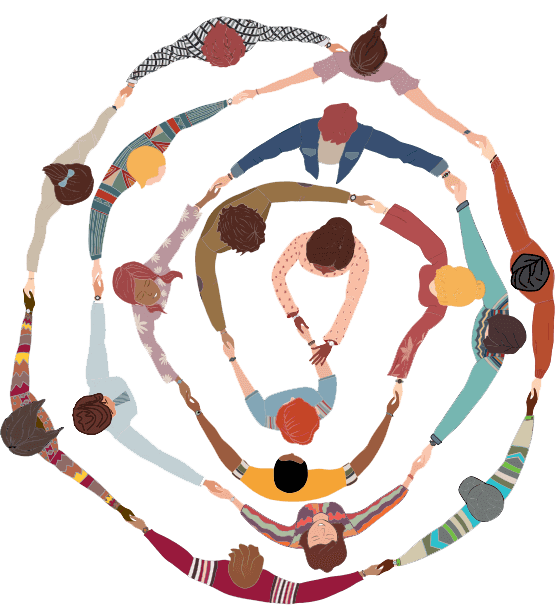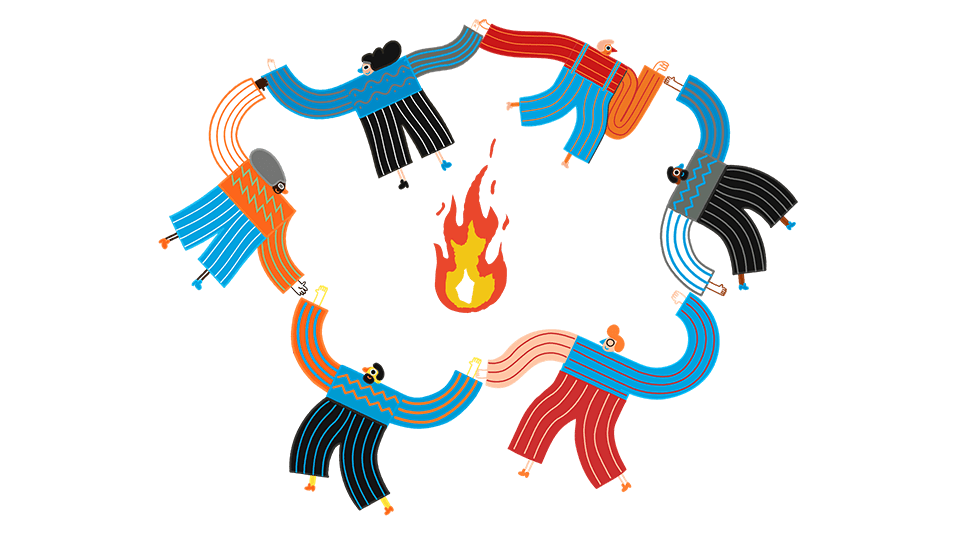Human flourishing
The basis of practicing Principled Innovation is to increase the possibility for humans and communities to flourish. Below you will find more information on how human flourishing informed Principled Innovation’s development.

We might define flourishing as ‘the relative attainment of a state in which all aspects of a person’s life are good including the contexts in which that person lives.’
VanderWeele and Lomas
Principled Innovation has human flourishing at its heart.
Human flourishing does not solely refer to the thriving of an individual, rather, it is the social and institutional conditions and environment surrounding the individual that is just as important (VanderWeele and Lomas, 2022), and these conditions enable all humans rather than select individuals to flourish (Jubilee Framework, 2017). And at the heart of flourishing lies an ethics of care (Noddings, 2012), where it is not the individual or the collective, but the relationship between people that is the starting point. An ethics of care calls for receptive listening to others and empathizing with or understanding others from the other’s perspective rather than referencing oneself. Individual character development helps us to embody the character assets that allow us to care authentically.
Purpose of Principled Innovation
Through our core value of Principled Innovation, we believe that education should answer to three imperatives:
An equity imperative
We need to deliver excellence in education to all learners regardless of any human characteristics that might lead to unfairness or discrimination in learning opportunities.
An economic imperative
We need to prepare learners for the next economy and equip them for success in the workforce of the future.
A democratic imperative
We need to prepare learners to be caring, responsible citizens capable of balancing individual ambition and the public good.

Principled Innovation draws from ASU’s institutional value of promoting educational equity (Nagashima & Gibbs, 2022), seeking to align policies, practices, and resources to eliminate unequal opportunities created by systemic discrimination based on race, gender, wealth, ability, and other forms of difference (Dumas, 2008; North, 2006). Equitable solutions advance us toward fostering understanding between social identities, beyond merely balancing demographic values.
Dumas, M. J. (2008). Theorizing redistribution and recognition in urban education research: How do we get dictionaries at Cleveland? In J. Anyon (Ed.), Theory and educational research: Toward critical social explanation (pp. 81–102). Routledge.
Jubilee Centre for Character and Virtues. (2017). A framework for character education in schools.
Nagashima, J., & Gibbs, N. P. (2021). Sense gathering and iteration: The evolution of a character education framework in higher education. Journal of Moral Education, 51(4), 518–534. https://doi.org/10.1080/03057240.2021.1909547
Noddings, N. (2012). The caring relation in teaching. Oxford Review of Education, 38(6), 771–781. https://doi.org/10.1080/03054985.2012.745047
North, C. E. (2006). More than words? Delving into the substantive meaning(s) of “social justice” in education. Review of Educational Research, 76(4), 507–535. https://doi.org/10.3102/00346543076004507
VanderWeele, T. J., & Lomas, T. (2023). Terminology and the Well-being Literature. Affective Science, 4(1), 36–40. https://doi.org/10.1007/s42761-022-00153-2